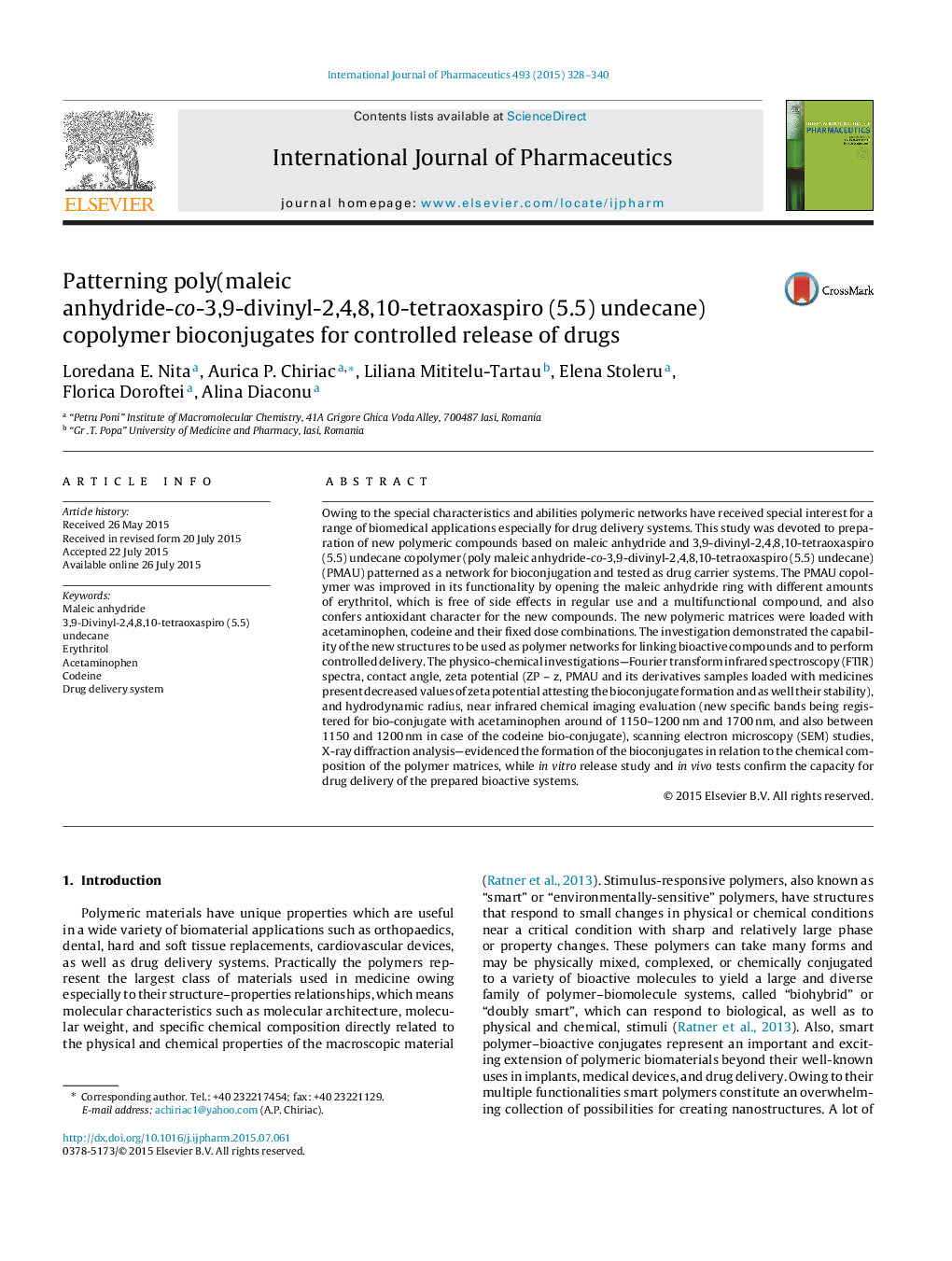| کد مقاله | کد نشریه | سال انتشار | مقاله انگلیسی | نسخه تمام متن |
|---|---|---|---|---|
| 2501273 | 1557331 | 2015 | 13 صفحه PDF | دانلود رایگان |

Owing to the special characteristics and abilities polymeric networks have received special interest for a range of biomedical applications especially for drug delivery systems. This study was devoted to preparation of new polymeric compounds based on maleic anhydride and 3,9-divinyl-2,4,8,10-tetraoxaspiro (5.5) undecane copolymer (poly maleic anhydride-co-3,9-divinyl-2,4,8,10-tetraoxaspiro (5.5) undecane) (PMAU) patterned as a network for bioconjugation and tested as drug carrier systems. The PMAU copolymer was improved in its functionality by opening the maleic anhydride ring with different amounts of erythritol, which is free of side effects in regular use and a multifunctional compound, and also confers antioxidant character for the new compounds. The new polymeric matrices were loaded with acetaminophen, codeine and their fixed dose combinations. The investigation demonstrated the capability of the new structures to be used as polymer networks for linking bioactive compounds and to perform controlled delivery. The physico-chemical investigations—Fourier transform infrared spectroscopy (FTIR) spectra, contact angle, zeta potential (ZP – z, PMAU and its derivatives samples loaded with medicines present decreased values of zeta potential attesting the bioconjugate formation and as well their stability), and hydrodynamic radius, near infrared chemical imaging evaluation (new specific bands being registered for bio-conjugate with acetaminophen around of 1150–1200 nm and 1700 nm, and also between 1150 and 1200 nm in case of the codeine bio-conjugate), scanning electron microscopy (SEM) studies, X-ray diffraction analysis—evidenced the formation of the bioconjugates in relation to the chemical composition of the polymer matrices, while in vitro release study and in vivo tests confirm the capacity for drug delivery of the prepared bioactive systems.
Figure optionsDownload high-quality image (218 K)Download as PowerPoint slide
Journal: International Journal of Pharmaceutics - Volume 493, Issues 1–2, 30 September 2015, Pages 328–340